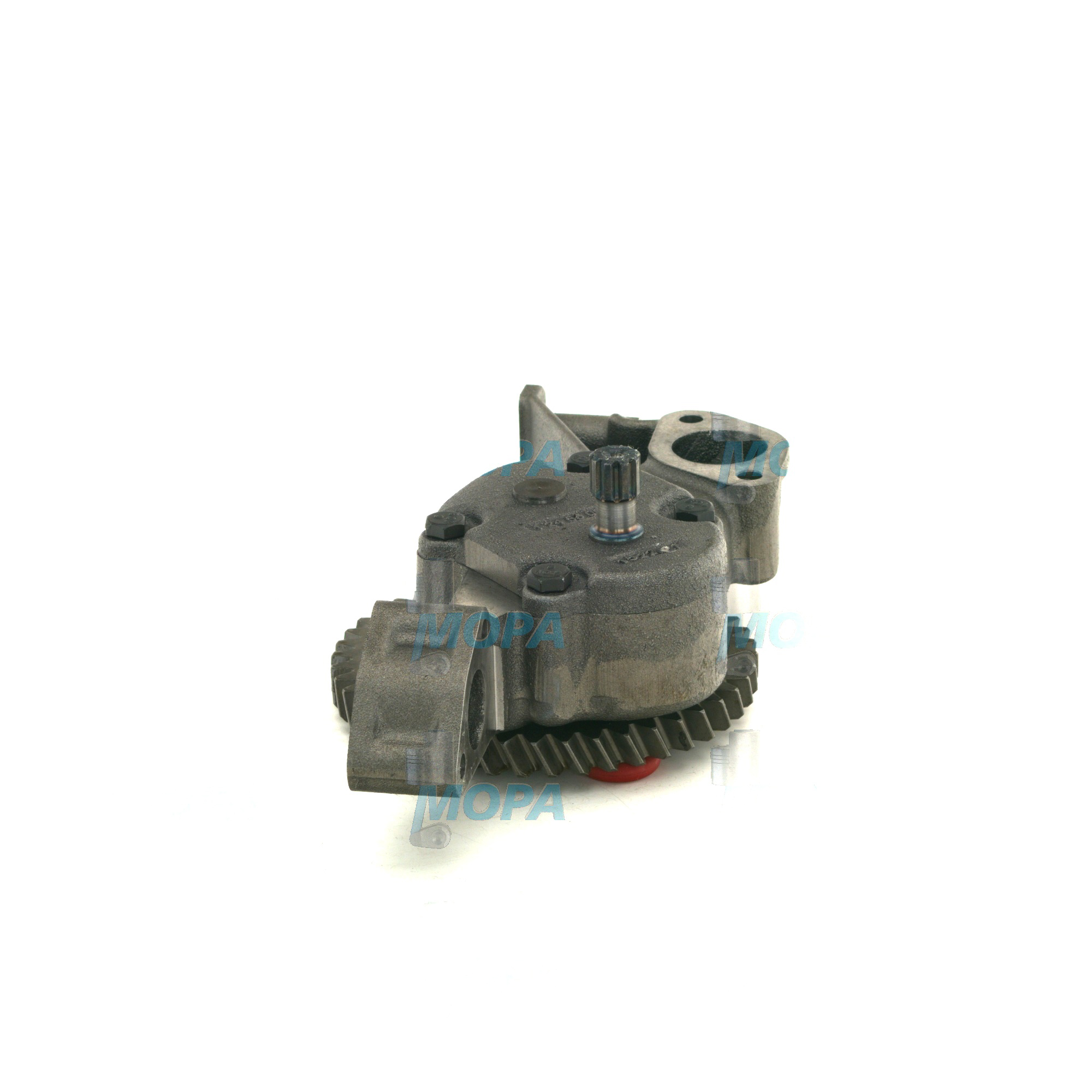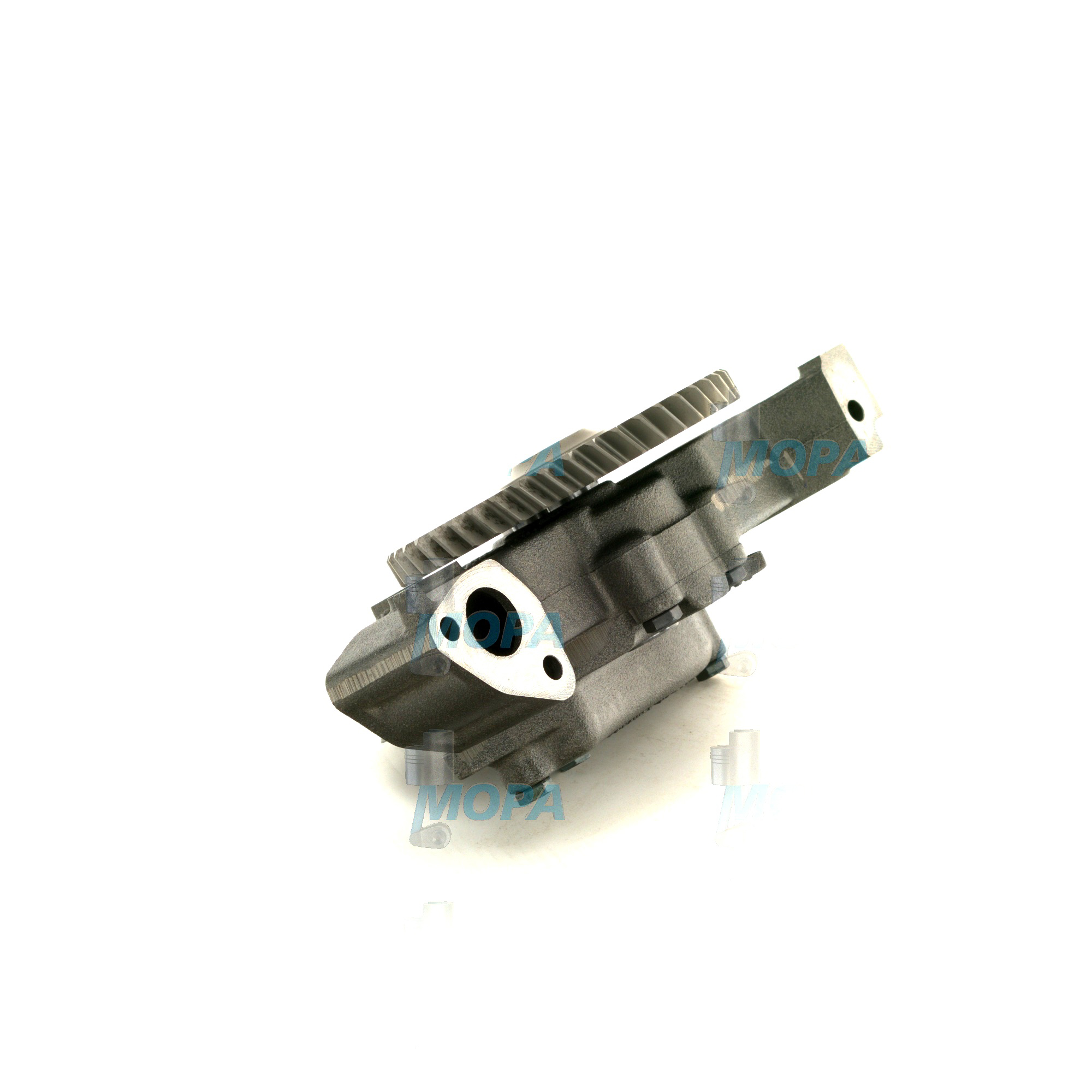OIL PUMP Pumps, parts and accessories
Pumps, parts and accessories form the circulating lifelines of any combustion engine. In marine, power generation, and industrial applications, they move vital media—lubricating oil, fuel, coolant and seawater—so that every bearing, liner, and turbocharger receives what it needs at the right pressure and flow. Within this article category you will find the complete ecosystem around the OIL PUMP and companion pump types: drive gears, rotors, shafts, relief valves, housings, seals, gaskets, strainers, couplings, sensors, and installation accessories. Together, these components protect the engine from friction, heat and contamination, and they directly influence uptime, fuel economy and total cost of ownership.
OIL PUMP technical function in diesel engine and marine engine systems
An OIL PUMP in a diesel engine is a positive-displacement unit—often gear, gerotor or screw type—that draws oil from the sump or service tank through a strainer, pressurizes it, and feeds it via the main gallery to crankshaft and camshaft bearings, piston cooling jets, valve trains, and turbocharger bearings. A calibrated relief valve limits maximum system pressure, while check valves and bypasses manage cold-start viscosity and filter differentials. In marine engine installations, duplex filters and redundant pump arrangements are common, and many engines use scavenge stages in dry-sump configurations to return oil from the crankcase back to the tank. Stable delivery from the OIL PUMP maintains hydrodynamic film strength, prevents metal-to-metal contact, and carries heat away from highly loaded components.
The category “Pumps, parts and accessories” also covers auxiliary pumps such as jacket-water/coolant pumps, fuel transfer and booster pumps, and seawater pumps. Coolant pumps sustain uniform engine temperatures and prevent thermal stress, while fuel pumps stabilize supply pressure to injection equipment, enabling precise timing and atomization. Across all of these, correct clearances, rotor pairing, surface finish, and spring rates in relief valves determine how an OIL PUMP performs at varying speeds, temperatures and oil viscosities. Poor suction-side design or worn parts can induce cavitation, aeration and pressure fluctuations, all of which reduce efficiency and accelerate wear.
- · Stable oil pressure across the full load range
- · Positive-displacement designs (gear, gerotor, screw) for reliable flow
- · Calibrated relief valves to protect the lubrication circuit
- · Precision rotors, gears and housings matched to engine specifications
- · High-quality seals, gaskets and shafts to prevent leaks and losses
- · Strainers and filtration interfaces to control contamination
- · Accessories for alignment, mounting and instrumentation
- · Options tailored to marine engine and diesel engine duty profiles
Why Pumps, parts and accessories matter for OIL PUMP reliability
The reliability and service life of medium- and high-speed engines depend on the health of the OIL PUMP and related parts. If the pump wears, clearances open up and volumetric efficiency falls. The immediate symptoms are slow pressure build at start-up, hot-idle low pressure, and fluctuating gauge readings under transient loads. Downstream effects include bearing wiping, cam and follower scuffing, overheated piston crowns due to weak cooling jets, and turbocharger bearing distress. In severe cases, oil aeration and starvation lead to catastrophic seizure.
Ancillary pumps carry similar risk profiles. A coolant pump with eroded impeller blades or a compromised seal can cause localized hotspots, liner cavitation, and coolant loss. A fuel pump with pad wear or sloppy tolerances compromises injection stability, elevating emissions and fuel burn. Robust pumps, parts and accessories keep suction conditions within acceptable NPSH limits, avoid cavitation, and maintain specified pressures through the full operating envelope. For shipowners and power plant operators, this translates directly into predictable maintenance intervals, fewer unplanned stops, and longer overhaul cycles.
OEM spare parts for OIL PUMP: performance, reliability, budget and service life
Selecting OEM spare parts suitable for the OIL PUMP and associated systems ensures that dimensions, materials and heat treatments match the engine builder’s specification. That means rotor-to-housing clearances that deliver the designed flow at rated speed and temperature, correctly lapped pressure relief seats that hold setpoints, and shaft seals that tolerate thermal cycling and the chemistry of modern lubricants. For a diesel engine or marine engine, these details preserve bearing film thickness and protect costly components downstream.
“Fit and forget” outcomes are achieved when parts are manufactured with controlled tolerances and validated processes. OEM parts reduce installation time because they align with existing housings and drives without modification. They also simplify quality control with traceable batches and consistent test data, supporting class documentation and audit trails. Over the life of the engine, the result is higher efficiency, fewer repeat interventions, and a better budget profile—less spend on rework, collateral damage, and expedited logistics.
OIL PUMP OEM parts in marine engine service
Marine duty cycles impose long periods at steady load punctuated by maneuvering and port operations. With OIL PUMP OEM parts—matched rotors, gears, shafts, relief components and seals—the lubrication circuit maintains pressure during abrupt rpm changes and cold starts after layups. Accessories such as strainers, couplings and instrument adapters complete the package so crews can monitor pressure, temperature and condition with confidence.
MOPA – fast, secure supply of OEM parts for OIL PUMP and engine pumps
MOPA is a proven partner for OEM spare parts in the category Pumps, parts and accessories. Purchasers and technical managers rely on our speed, quality and security in the trade of OEM parts for diesel and gas engines. We source and deliver OIL PUMP components, complete pump assemblies, and the accessories required for safe installation—seals, gaskets, relief valves, shafts, strainers and couplings—backed by rigorous documentation and traceability.
From urgent AOG-style shipments to planned dry-dock refits, MOPA streamlines procurement with precise part-number cross-references, technical support on interchangeability, and logistics tailored to marine engine and power plant schedules. Our approach lowers risk: the right OIL PUMP OEM parts arrive on time, fit first time, and keep your equipment running to specification.
Conclusion: OIL PUMP Pumps, parts and accessories
The OIL PUMP is central to engine performance and protection, and the broader set of pumps, parts and accessories ensures stable lubrication, cooling and fuel delivery. Using OEM spare parts suitable for the OIL PUMP safeguards pressure, flow and durability—improving reliability, extending service life, and optimizing the budget over the entire operating cycle.




